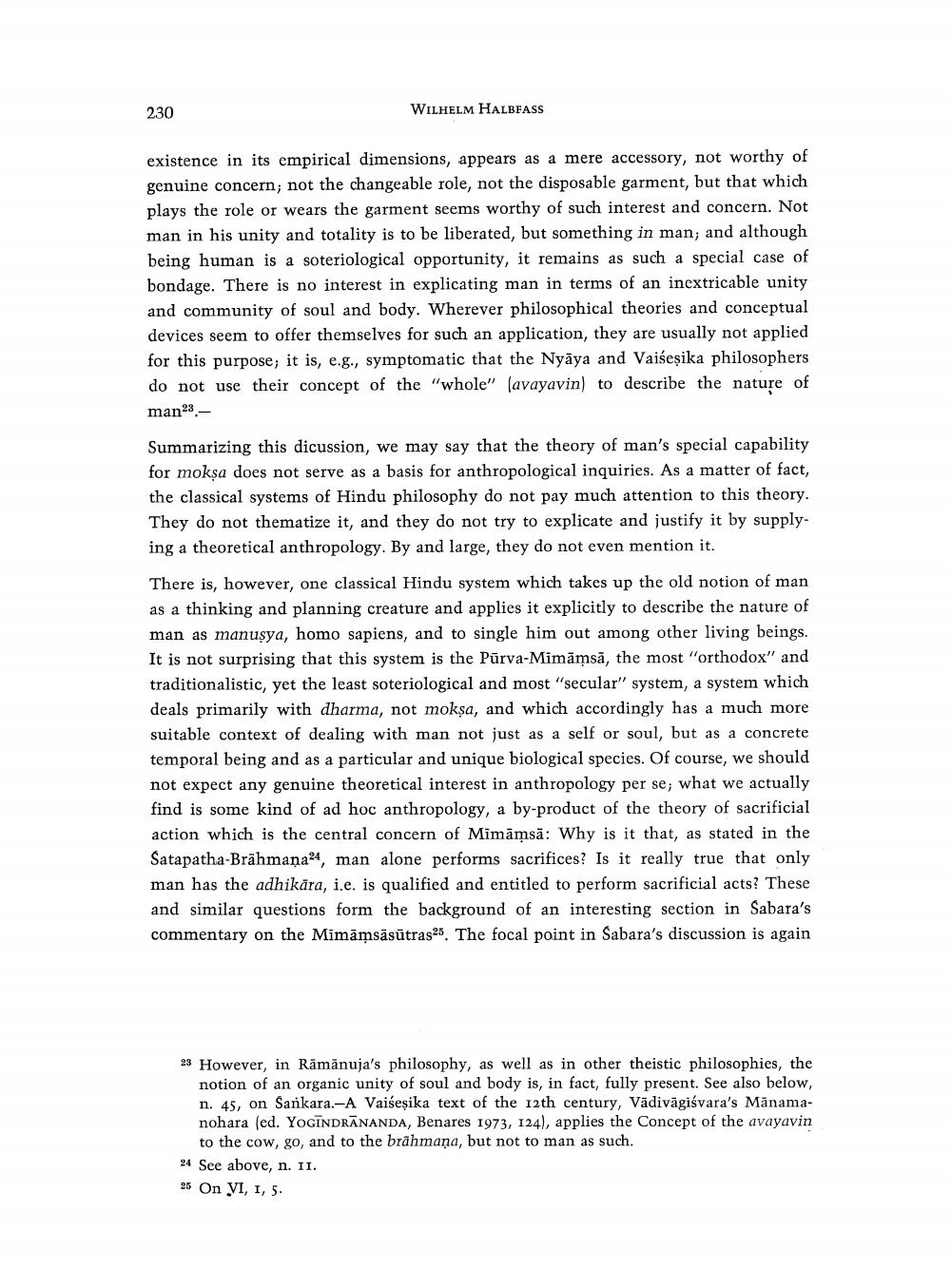Book Title: Anthropological Problems In Classical Indian Philosophy Author(s): Wilhelm Halbfass Publisher: Wilhelm Halbfass View full book textPage 6
________________ 230 WILHELM HALBFASS existence in its empirical dimensions, appears as a mere accessory, not worthy of genuine concern; not the changeable role, not the disposable garment, but that which plays the role or wears the garment seems worthy of such interest and concern. Not man in his unity and totality is to be liberated, but something in man; and although being human is a soteriological opportunity, it remains as such a special case of bondage. There is no interest in explicating man in terms of an inextricable unity and community of soul and body. Wherever philosophical theories and conceptual devices seem to offer themselves for such an application, they are usually not applied for this purpose, it is, e.g., symptomatic that the Nyaya and Vaišeșika philosophers. do not use their concept of the "whole" (avayavin) to describe the nature of man23. Summarizing this dicussion, we may say that the theory of man's special capability for mokṣa does not serve as a basis for anthropological inquiries. As a matter of fact, the classical systems of Hindu philosophy do not pay much attention to this theory. They do not thematize it, and they do not try to explicate and justify it by supplying a theoretical anthropology. By and large, they do not even mention it. There is, however, one classical Hindu system which takes up the old notion of man as a thinking and planning creature and applies it explicitly to describe the nature of man as manusya, homo sapiens, and to single him out among other living beings. It is not surprising that this system is the Purva-Mimämsä, the most "orthodox" and traditionalistic, yet the least soteriological and most "secular" system, a system which deals primarily with dharma, not moksa, and which accordingly has a much more suitable context of dealing with man not just as a self or soul, but as a concrete temporal being and as a particular and unique biological species. Of course, we should not expect any genuine theoretical interest in anthropology per se; what we actually find is some kind of ad hoc anthropology, a by-product of the theory of sacrificial action which is the central concern of Mimämsä: Why is it that, as stated in the Satapatha-Brahmana", man alone performs sacrifices? Is it really true that only man has the adhikara, i.e. is qualified and entitled to perform sacrificial acts? These and similar questions form the background of an interesting section in Sabara's commentary on the Mimämsäsūtras25. The focal point in Sabara's discussion is again 23 However, in Rāmānuja's philosophy, as well as in other theistic philosophies, the notion of an organic unity of soul and body is, in fact, fully present. See also below, n. 45, on Sankara.-A Vaiśeşika text of the 12th century, Vadivagiśvara's Manamanohara (ed. YOGINDRANANDA, Benares 1973, 124), applies the Concept of the avayavin to the cow, go, and to the brahmana, but not to man as such. 24 See above, n. 11. 25 On VI, 1, 5.Page Navigation
1 ... 4 5 6 7 8 9 10 11 12
